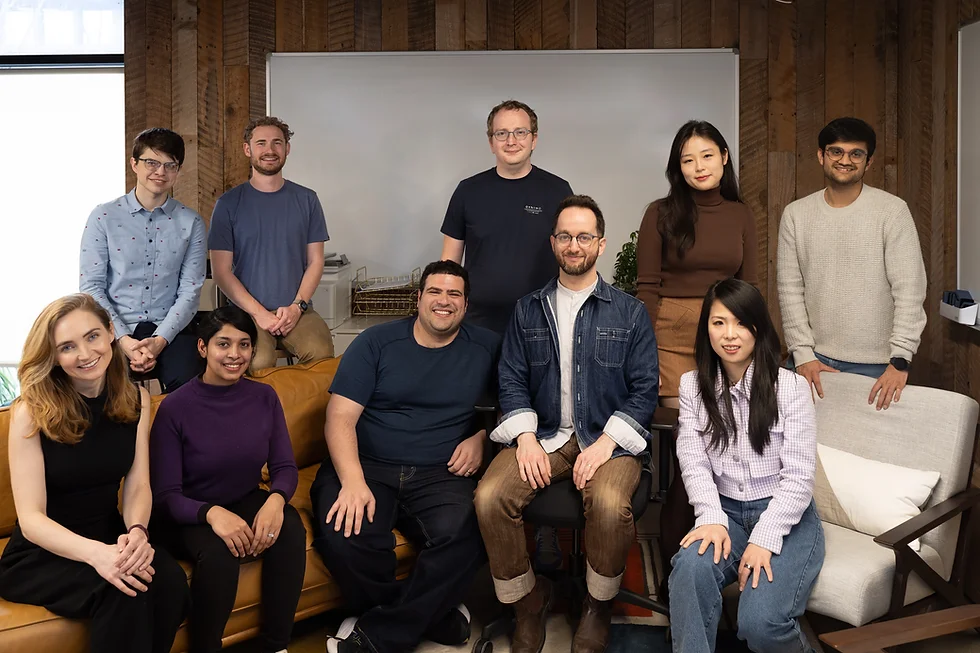In his latest Forbes column, Radical Ventures Partner Rob Toews published his predictions for AI in 2023. Next year, Rob is anticipating GPT-4’s release, the normalization of self-driving, humanoid robot development, and a revolution in search. In his 2022 predictions retrospective, there were some misses and significant hits including the dominance of language AI and Toronto establishing itself as the most important AI hub in the world outside of Silicon Valley and China.
Here are the highlights of Rob’s 10 AI for 2023:
1) GPT-4 will be released in the next couple months—and yes, it will be a big deal.
“Expect GPT-4 to be released early in the new year and to represent a dramatic step-change performance improvement relative to GPT-3 and 3.5. As manic as the recent hype around ChatGPT has been, it will be a mere prelude to the public reaction when GPT-4 is released. Buckle up.”
2) We are going to start running out of data to train large language models.
“It has become a cliché to say that data is the new oil. This analogy is fitting in one underappreciated way: both resources are finite and at risk of being exhausted. The area of AI for which this concern is most pressing is language models.”
3) For the first time, some members of the general public will begin using fully driverless cars as their day-to-day mode of transportation.
“In 2023, robotaxi services will rapidly transition from a fascinating novelty to a viable, convenient — even mundane — way to get around the city. The number of robotaxis on the road and the number of people who use them will surge. In short, autonomous vehicles are about to enter their commercialization and scaling phase.
Rollout will happen on a city-by-city basis. Beyond San Francisco, expect fully driverless services to become available to the general public in at least two more U.S. cities next year. Plausible candidate locations include Phoenix, Austin, Las Vegas and Miami.”
4) Midjourney will raise venture capital funding.
“Midjourney’s founder and CEO David Holz was previously the cofounder and CTO at Leap Motion, a once-high-flying virtual reality startup that raised close to $100 million in venture funding during the 2010s before crashing back down to earth and getting acquired in a fire sale. Holz’s negative experiences with his VC investors during the Leap Motion saga have allegedly convinced him not to take outside capital this time around. The many VC suitors who have sought to invest in Midjourney have so far all been rebuffed.
Yet faced with the demands of blistering growth, intensifying competition, and a massive market opportunity, we predict Holz will give in and raise a large funding round for Midjourney in 2023. Otherwise, the company risks being left behind in the generative AI gold rush that it helped usher in.”
5) Search will change more in 2023 than it has since Google went mainstream in the early 2000s.
“In the wake of ChatGPT, one reconceptualization of search that has gotten a lot of attention is the idea of conversational search. Why enter a query and get back a long list of links (the current Google experience) if you could instead have a dynamic conversation with an AI agent in order to find what you are looking for? Conversational search has a bright future… You.com, Character.AI, Metaphor and Perplexity are among the wave of promising young startups looking to take on Google and reinvent consumer search with LLMs and conversational interfaces.”
6) Efforts to develop humanoid robots will attract considerable attention, funding and talent. Several new humanoid robot initiatives will launch.
“In 2023, expect more contenders to enter the fray — both new startups and established companies (e.g., Toyota, Samsung, General Motors, Panasonic) — as the race to build humanoid robots heats up. Similar to autonomous vehicles circa 2016, waves of talent and capital will start pouring into the field next year as more people come to appreciate the scale of the market opportunity.”
7) The concept of “LLMOps” will emerge as a trendy new version of MLOps.
“ …we are witnessing the emergence of a new AI technology platform: large language models (LLMs). Compared to pre-LLM machine learning, large language models represent a new AI paradigm with distinct workflows, skillsets and possibilities. The easy availability of massive pretrained foundation models via API or open source completely changes what it looks like to develop an AI product. A new suite of tools and infrastructure is therefore destined to emerge. We predict the term ‘LLMOps’ will catch on as a shorthand to refer to this new breed of AI picks and shovels.”
8) The number of research projects that build on or cite AlphaFold will surge.
“Mere months after DeepMind’s latest release, more than 500,000 researchers from 190 countries have used the AlphaFold platform to access 2 million different protein structures. This is just the beginning. Breakthroughs of AlphaFold’s magnitude require years for their full impact to manifest. In 2023, expect the volume of research built on top of AlphaFold to surge. Researchers will take this vast new trove of foundational biological knowledge and apply it to produce world-changing applications across disciplines, from new vaccines to new types of plastics.”
9) DeepMind, Google Brain, and/or OpenAI will undertake efforts to build a foundation model for robotics.
“Foundation models have been a key driver of recent progress in AI… AI systems that act in the real world — e.g., autonomous vehicles, warehouse robots, drones, humanoid robots — have so far remained mostly untouched by the new foundation model paradigm. This will change in 2023. Expect early pioneering work on this concept of foundation models for robotics to come from the world’s leading AI research organizations: DeepMind, Google Brain or perhaps OpenAI (though the latter took a step back from robotics research last year).”
10) Many billions of dollars of new investment commitments will be announced to build chip manufacturing facilities in the United States as the U.S. makes contingency plans for Taiwan.
“Artificial intelligence, like human intelligence, depends upon both software and hardware. Certain types of advanced semiconductors are essential to power modern AI. By far the most important and widespread of these are Nvidia’s GPUs; players like AMD, Intel and a handful of younger AI chip upstarts are also seeking to enter the market. Nearly all of these AI chips are designed in the United States. And nearly all of them are manufactured in Taiwan.”
Read Rob’s 2023 predictions in full. Rob writes a regular column for Forbes about artificial intelligence.
Radical Reads is edited by Leah Morris (Senior Director, Velocity Program, Radical Ventures).





